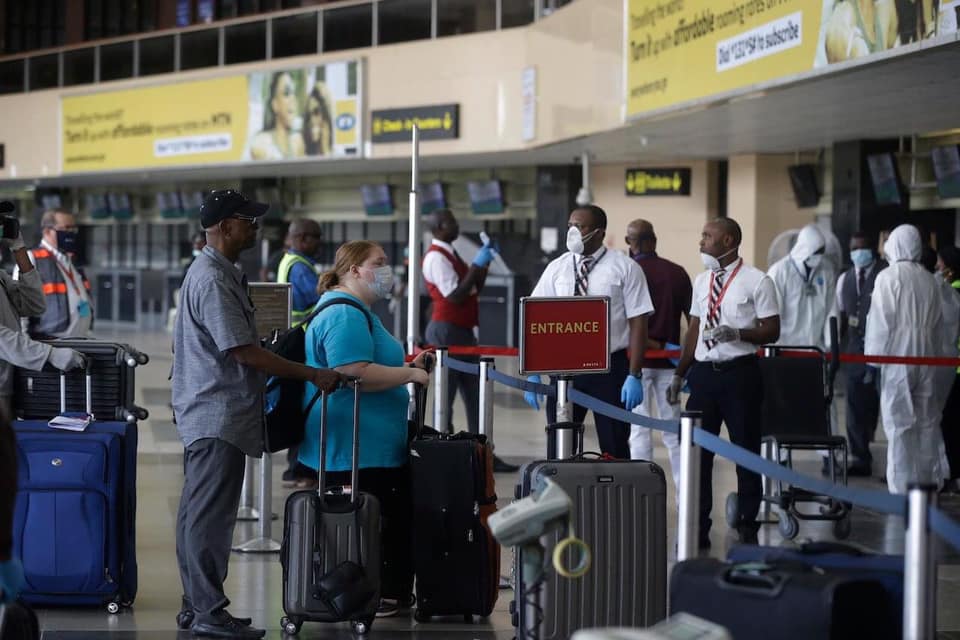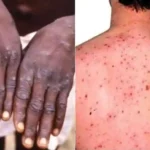Social distancing has become the new buzzword since an outbreak of coronavirus disease was declared. But what is it and how does it work to prevent the spread of disease?
Among measures that public health authorities have advised to limit the spread of Covid-19 is social distancing. It is also called physical distancing.
It means keeping space between yourself and other people outside of your home.
It seems almost impossible but not so.
The World Health Organisation, the US Centre for Disease Control and the Nigeria Centre for Disease Control break down social distancing.
- Stay at least 6 feet (2 meters) from other people
- Do not gather in groups
- Stay out of crowded places and avoid mass gatherings
Why? “When someone coughs or sneezes they spray small liquid droplets from their nose or mouth which may contain virus” says WHO.
“If you are too close, you can breathe in the droplets, including the COVID-19 virus if the person coughing has the disease.”

That could be your work mate, colleague, classmate, family member or even a fellow party goer.
Why social distance?
According to the CDC, the disease spreads mainly among people who are in close contact (within about 6 feet) for a prolonged period.
That could be your work mate, colleague, classmate, family member or even a fellow partygoer. Nearly every scenario that’s been painted since the start of the outbreak in Nigeria fits clearly.
Spread happens when an infected person coughs, sneezes, or talks, and droplets from their mouth or nose are launched into the air and land in the mouths or noses of people nearby.
The droplets can also be inhaled into the lungs. Recent studies indicate that people who are infected but do not have symptoms likely also play a role in the spread of COVID-19.
It may be possible that a person can get COVID-19 by touching a surface or object that has the virus on it and then touching their own mouth, nose, or eyes.
However, this is not thought to be the main way the virus spreads. COVID-19 can live for hours or days on a surface, depending on factors such as sun light and humidity.
Social distancing helps limit contact with infected people and contaminated surfaces.
Although the risk of severe illness may be different for everyone, anyone can get and spread COVID-19. Everyone has a role to play in slowing the spread and protecting themselves, their family, and their community, according to the CDC.

What’s the science for social distancing?
There is some science to back social distancing as a response to a disease outbreak.
From school closure and reducing workplace numbers to reducing social and community contacts, and increasing home isolation, they are a part of preparedness plan.
They represent the only type of intervention measure guaranteed to be available against a novel strain of influenza in the early phases of a pandemic, wrote researchers reported in an article in BMC Public Health way back in April 2009, ahead of Covid-19
The typical goal is to reduce the potential number of people who become infected.
Social distancing matters, so does the time it is deployed following the outbreak.
In a model of a community with a population of approximately 30,000 people researchers simulated the effect of social distancing: school closure, school closure, increased isolation of symptomatic individuals in their household, workplace nonattendance, and reduction of contact in the wider community.
With the present pandemic, that would be school closure, self isolation, stay at home, and ban on large gatherings in markets, parties, worship centres and any event with more than 50 people.
Each intervention was simulated in isolation and then in several combinations. The researches also examined who delay in starting the intervention affected the number of people infected.

To understand the result, it is important to understand R0—that’s the reproduction ratio of a epidemic. It is the number of people or infection directly linked to a single infection. In other words, if every one in a community was susceptible, how many infections would be directly linked to each case.
For coronavirus, the R0 is around 3—that means each infected person could infected three others. That’s how infections spread. With social distance, every person who avoid getting infected means three more people who will not get infected.
Back to the model. It showed that for an epidemic with an R0 value of 1.5, a combination of all four social distancing measures could reduce the final attack rate from 33% to below 10% if introduced within 6 weeks from the introduction of the first case.
In contrast, for an R0 of 2.5 these measures must be introduced within 2 weeks of the first case to achieve a similar reduction.
A two-week delay resulted in final attack rate of 7%, a three-week delay saw final attack rate of 21%, and a four-week delay saw a final attack rate of 45%. The longer the delay in activation social distancing interventions, the high the number of people who got infected.
For an epidemic with R0 of 3.5 the combination of all four measures could reduce the final attack rate from 73% to 16%, but only if introduced without delay.
Conversely, delays of 1, 2 or 3 weeks resulted in final attack rates of 19%, 35% or 63% respectively.
Timothy Reluga, department of mathematics at University of Washington, well before Covid-19 calculated the tradeoff between daily social distancing and the reduction in infection risk.
“Social distancing is particularly useful when it is inexpensive and can delay the epidemic until a vaccine becomes widely available,” he wrote in his journal report.

 Join Daily Trust WhatsApp Community For Quick Access To News and Happenings Around You.
Join Daily Trust WhatsApp Community For Quick Access To News and Happenings Around You.


